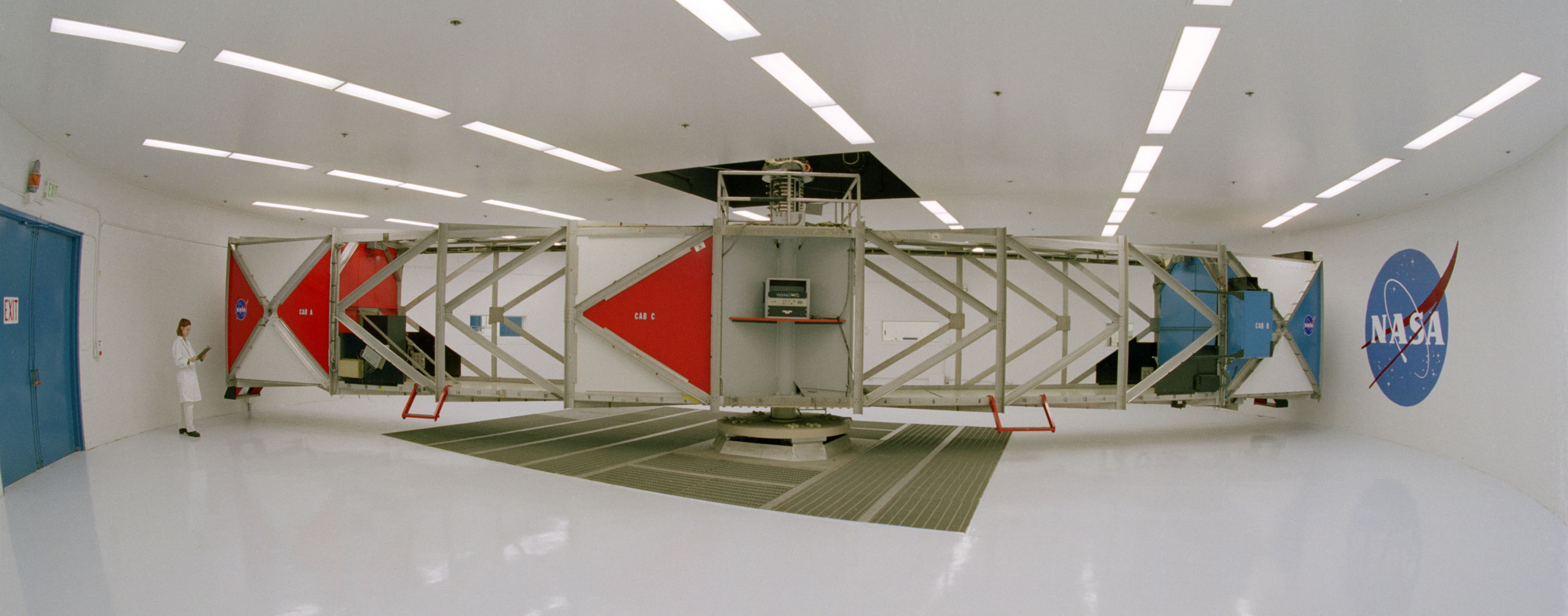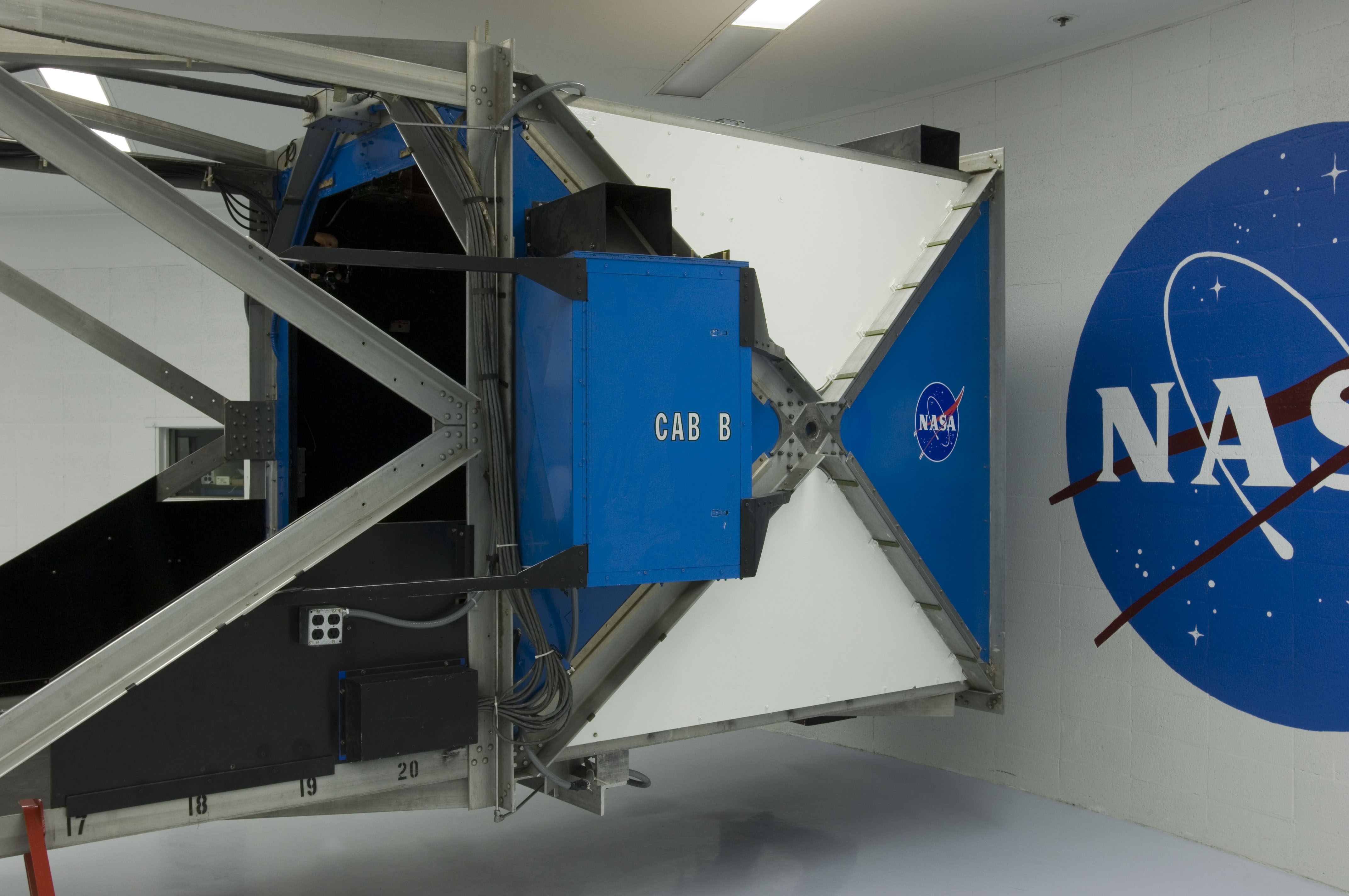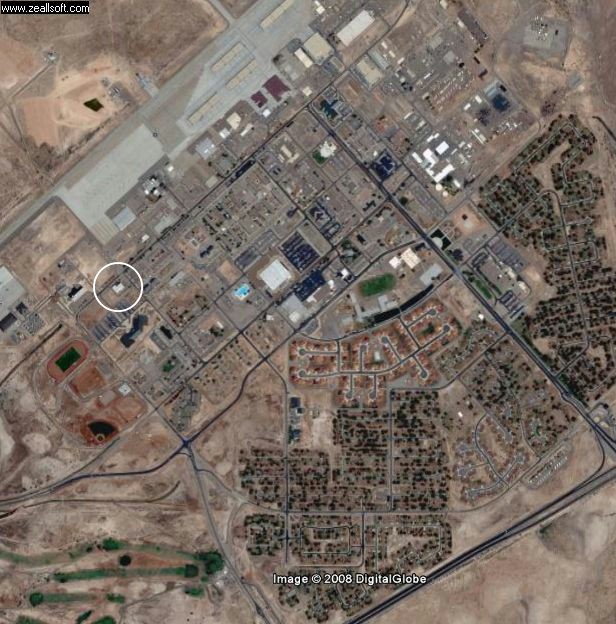A centrifuge is a machine that spins around while containing
something in compartments at its outer ends. Usually, this
is used to separate chemicals or particles. The centrifugal
force causes heaver things to separate to the outside and
lighter things to separate to the inside.
But there is a special centrifuge, located at Holloman Air
Force Base, which holds people in its outer chambers. It
is not for separating their parts, although it may feel
like it at high speeds. It is for training pilots how to
deal with "high-G" forces. That is, forces which are higher
than the pull of the Earth's gravitation.
Human Centrifuges are exceptionally large centrifuges that
test the reactions and tolerance of pilots and astronauts to
acceleration above those experienced in the Earth's gravity.
The US Air Force at Holloman Air Force Base, NM operates a
human centrifuge. It is operated by the aerospace physiology
department for the purpose of training and evaluating
prospective fighter pilots for high-g flight in Air Force
fighter aircraft.
The use of large centrifuges to simulate a feeling of gravity
has been proposed for future long-duration space missions.
Exposure to this simulated gravity would prevent or reduce
the bone decalcification and muscle atrophy that affect
individuals exposed to long periods of freefall. An example
of this can be seen in the film 2001: A Space Odyssey.
High-G training is done by aviators and astronauts
who are subject to high levels of acceleration ('G').
It is designed to prevent a g-induced Loss Of
Consciousness (abbreviated g-LOC), a situation when
g-forces move the blood away from the brain to the
extent that consciousness is lost. Incidents of
acceleration-induced loss of consciousness have
caused fatal accidents in aircraft.
Basically, when you are in the centrifuge, you sit inside a
box at the end of one of the arms.
|
Don't worry, though. You sit in a comfortable seat inside
the box. (If you didn't, your own weight could crush your
body.) You are also in there with lots of monitors and
other equipment to measure your body's reactions, and to
make sure you are still OK.
As g-forces increase, visual effects include loss
of colour vision (grey-out), followed by tunnel vision
(where peripheral vision is lost, retaining only
the centre vision). If g-forces increase further,
complete loss of vision will occur, while
consciousness remains. These effects are due to
a reduction of blood flow to the eyes before
blood flow to the brain is lost, because the
extra pressure within the eye (intraocular pressure)
counters the blood pressure.
A further increase in g-forces will cause g-LOC where
consciousness is lost. This is doubly dangerous because,
on recovery as g is reduced, a period of several seconds
of disorientation occurs, during which a pilot's aircraft
can dive into the ground. Brief and vivid dreams are also
reported to follow G-LOC.
The g thresholds at which these effects occur
depend on the training, age and fitness of the
individual. An un-trained individual not used
to the g-straining manoevre, can black out
between 4 and 6 g, particularly if this is
pulled suddenly. Roller coasters typically do
not expose the occupants to much more than about
3 g. A hard slap on the face may impose hundreds
of g-s locally but not produce any real damage:
a constant 15 g-s for a minute, however, may be
deadly. A trained, fit individual wearing a
g suit and practising the straining manoeuvre
(tightening of lower body muscles) can, with some
difficulty, sustain up to 9g without loss of consciousness.
The centrifuge at Holloman goes up to 20 G's - an amount
which would be fatal for any human, but which allows for
the testing and development of advanced G-suit design.
For a look at a movie of the actual process of an airman
being tested in the human centrifuge at 4, 5, and 6 G's,
click
here
|



